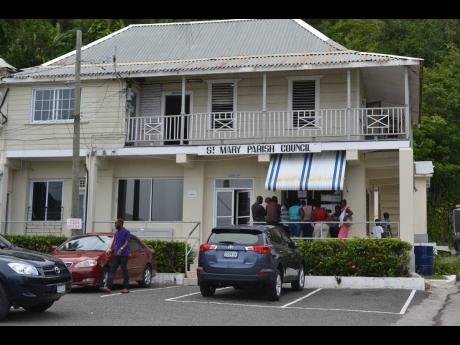No red tape - Workload, staff shortage hamper subdivision process in St Mary, says CEO
Chief executive officer (CEO) of the St Mary Municipal Corporation, Ethlyn Douglas, has dismissed bureaucratic red tape for the slow pace in approving subdivision applications and insists that a shortage of hands at the corporation is the cause.
Douglas was responding to inquiries by The Gleaner after a St Mary resident had written a letter complaining that after eight months, his application to divide a parcel of land in two has still not been approved.
“It’s not bureaucracy,” Douglas asserted.
“Number one: The workload is too much for one person. Right now, my planning department is literally cut in half. Half of their work is now on my desk. Part of the reason is, I have an enormous workload. I need more workers. You need more people reviewing applications, and that will cut off some of the things that are on my desk,” Douglas explained.
Despite Douglas’ insistence that there is no bureaucracy holding up subdivision applications, a look at the process itself suggests a tedious progression from the date an application is made to when the applicant finally gets approval.
A synopsis of the route shows that when an application pertaining to land (building and subdivision) reaches the municipality, it is first reviewed by the Roads and Works Department, then by the planning committee.
If it is for a subdivision, it is also sent to the health department for review based on the number of lots, and especially as it relates to the sewerage treatment pipes.
The application is then sent back to the Roads and Works Department for a site inspection, after which under the Local Improvement Act, it has to be sent to the National Environment and Planning Agency (NEPA).
The process differs a bit, depending on the number of lots and also if the subdivision has a roadway.
For approvals to subdivide into nine lots and under five acres, the application also has to be sent to the National Works Agency (NWA).
“If we do not receive reviews from NWA or NEPA, no matter how long they take, we can’t process the application,” Douglas pointed out.
The type of application and the numbers also speak to which other agency an application is sent to, and could include the Water Resources Authority, the Office of Disaster Preparedness and Emergency Management and, where bauxite is on the property, the Jamaica Bauxite Institute.
“They look at their intricacies based on their responsibilities. When all of those recommendations are in, which come at varying times, then those are reviewed by the Planning Department (director of planning) and they are compiled.”
Usually, the returned applications would remain in the Planning Department, but because of the staff shortage, they are now piling up on the CEO’s desk.
Douglas said further: “If in that compilation the officers of the corporation see any anomalies, they can send back to the respective agencies for clarification. Then we send the compiled conditions that have been corrected to the client to accept.”
The applicant then has 28 days in which to accept, to not accept, or to request an amendment to the conditions set out by the corporation. If an amendment is requested, the corporation has to write to the agency that recommended that particular condition to give their views on the request by the applicant.
Douglas explained: “But say everything is OK and the client accepted, it is then listed for the nearest planning committee meeting, meetings are held once per month. Say the meeting approves the application, it is then sent to the Ministry of Economic Growth and Job Creation for the minister with responsibility for land to sanction the corporation’s decision. The corporation then has to wait on the sanctioning.”
When the ministry responds, a document is created by the corporation and is then tabled at the next sitting of the council for the corporation’s seal to be affixed to the document. When the corporation’s seal is affixed to the document, the client is called in to them pick up.
Douglas, who has many years of experience within the system, suggested that a reasonable period for a subdivision application to be processed would be around six months.
“Being short-staffed would stretch it. Things must be done correctly,” she asserted.

